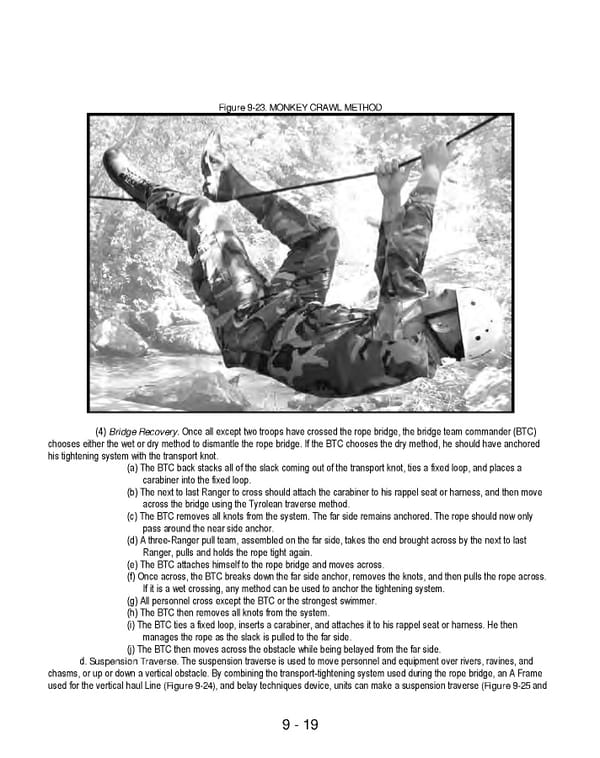9 - 19 Figure 9-23. MONKEY CRAWL METHOD (4) Bridge Recovery. Once all except two troops have crossed the rope bridge, the bridge team commander (BTC) chooses either the wet or dry method to dismantle the rope bridge. If the BTC chooses the dry method, he should have anchored his tightening system with the transport knot. (a) The BTC back stacks all of the slack coming out of the transport knot, ties a fixed loop, and places a carabiner into the fixed loop. (b) The next to last Ranger to cross should attach the carabiner to his rappel seat or harness, and then move across the bridge using the Tyrolean traverse method. (c) The BTC removes all knots from the system. The far side remains anchored. The rope should now only pass around the near side anchor. (d) A three-Ranger pull team, assembled on the far side, takes the end brought across by the next to last Ranger, pulls and holds the rope tight again. (e) The BTC attaches himself to the rope bridge and moves across. (f) Once across, the BTC breaks down the far side anchor, removes the knots, and then pulls the rope across. If it is a wet crossing, any method can be used to anchor the tightening system. (g) All personnel cross except the BTC or the strongest swimmer. (h) The BTC then removes all knots from the system. (i) The BTC ties a fixed loop, inserts a carabiner, and attaches it to his rappel seat or harness. He then manages the rope as the slack is pulled to the far side. (j) The BTC then moves across the obstacle while being belayed from the far side. d. Suspension Traverse. The suspension traverse is used to move personnel and equipment over rivers, ravines, and chasms, or up or down a vertical obstacle. By combining the transport-tightening system used during the rope bridge, an A Frame used for the vertical haul Line (Figure 9-24), and belay techniques device, units can make a suspension traverse (Figure 9-25 and
 Ranger Handbook Page 186 Page 188
Ranger Handbook Page 186 Page 188